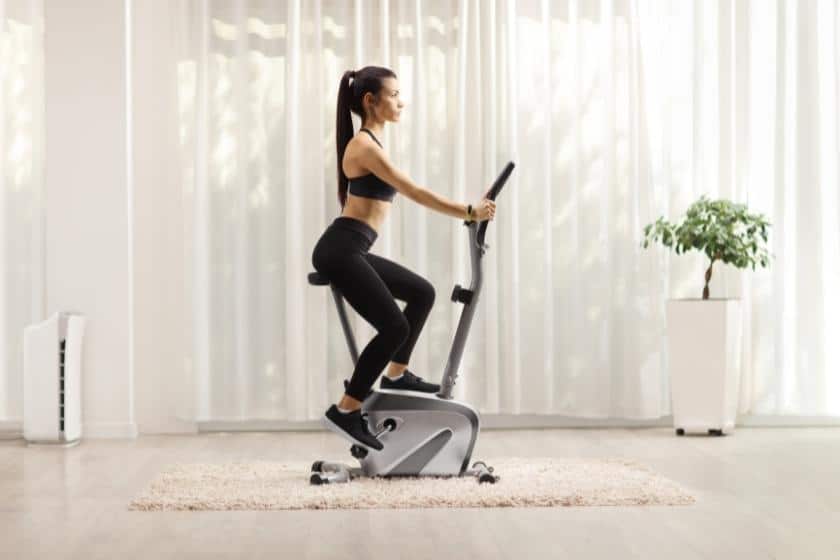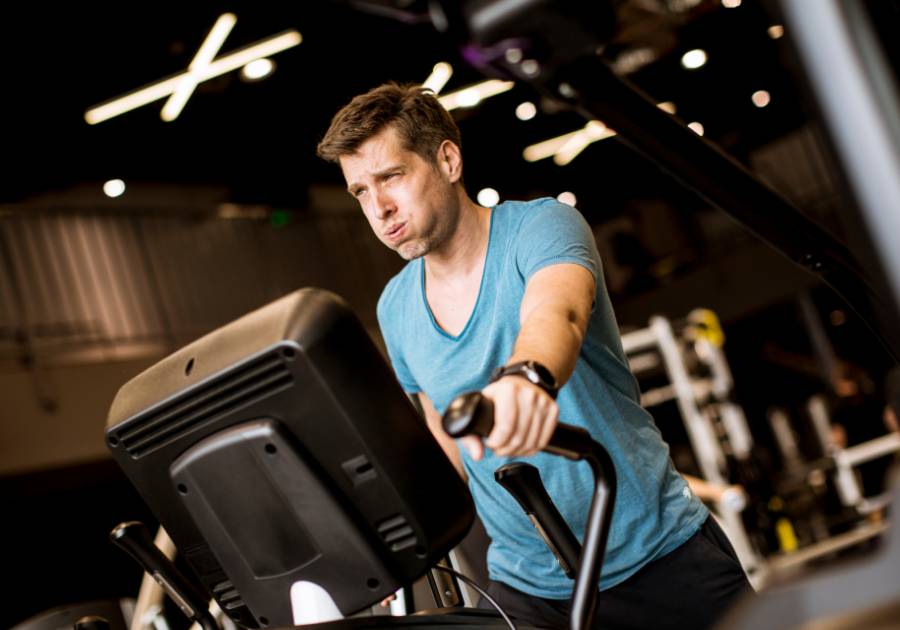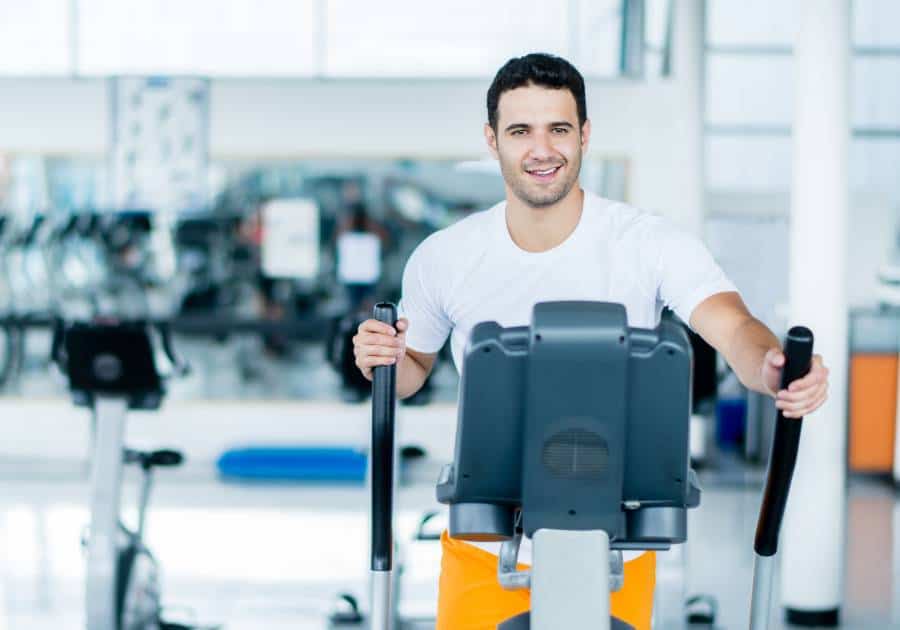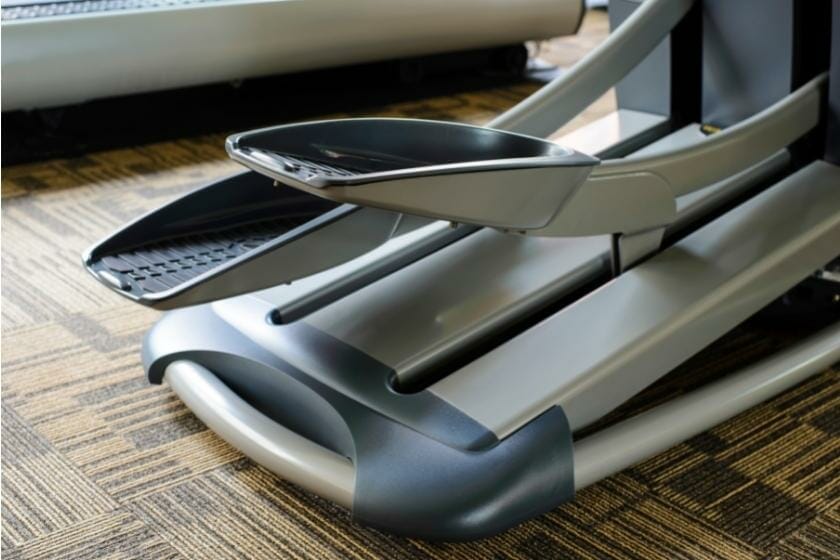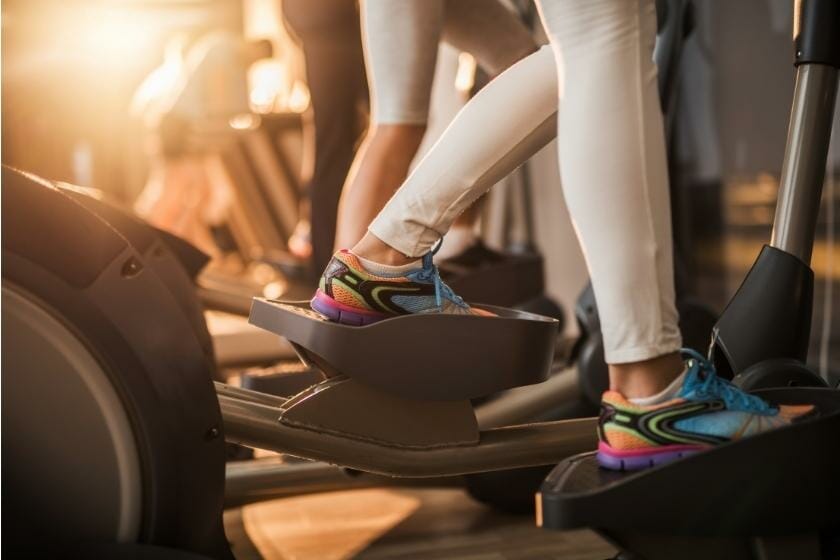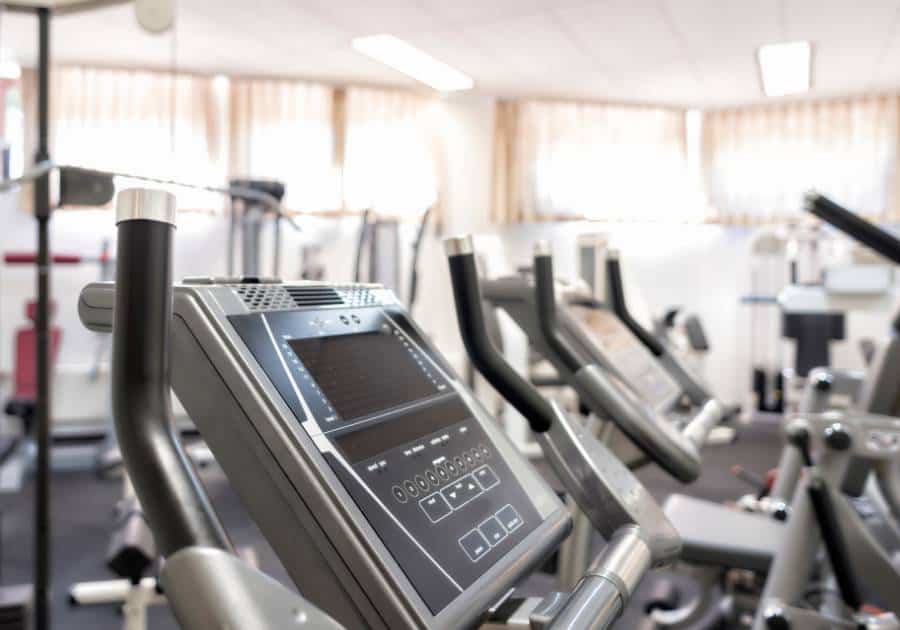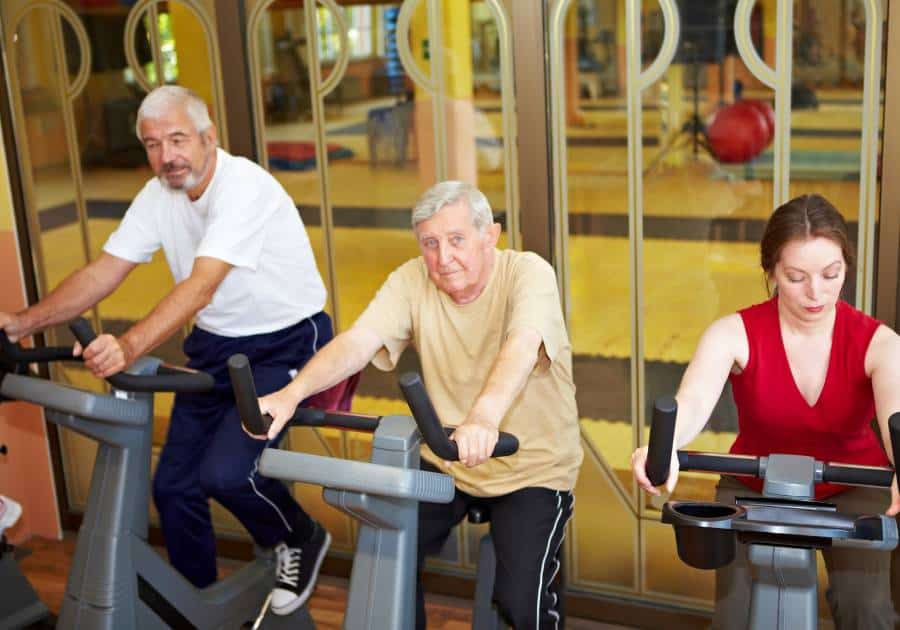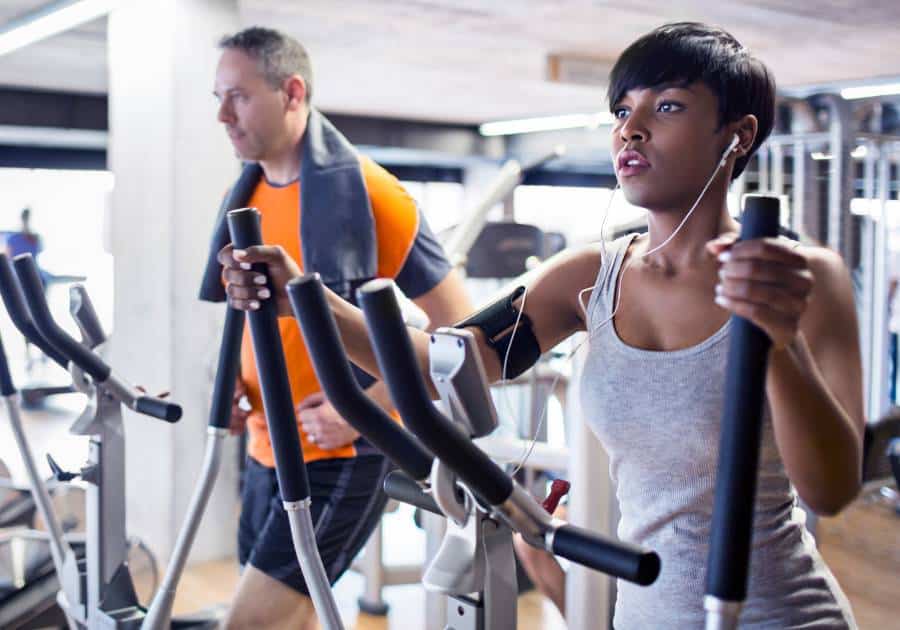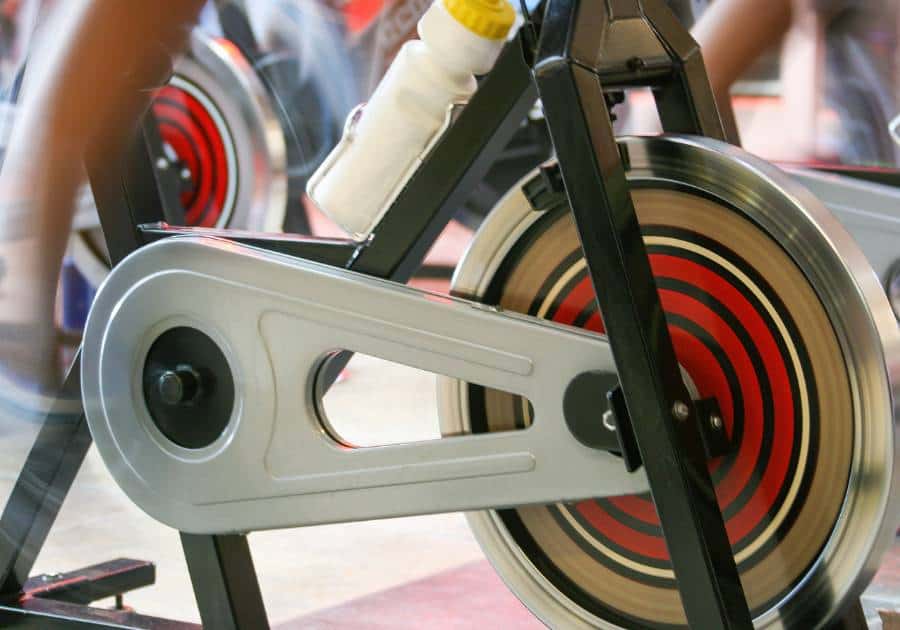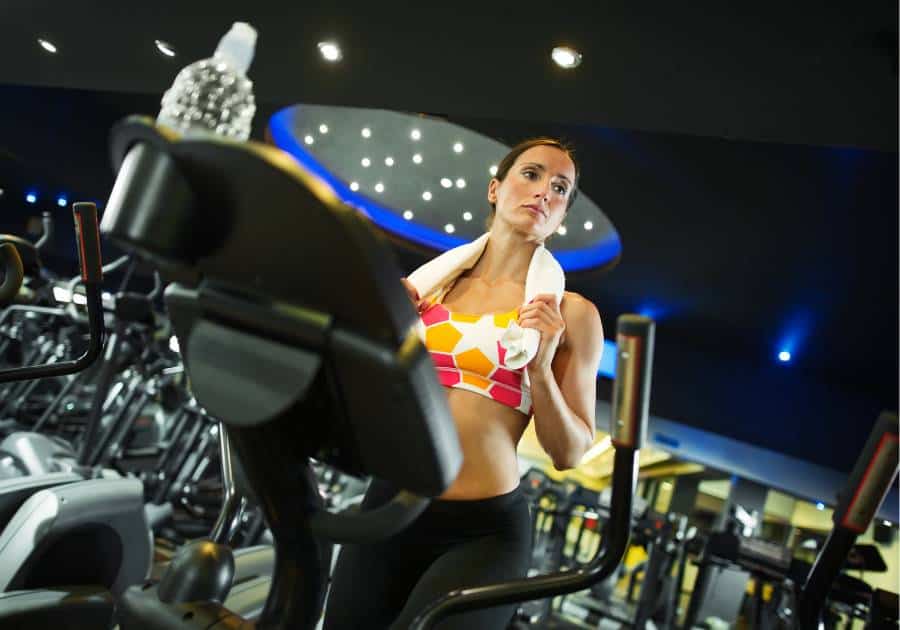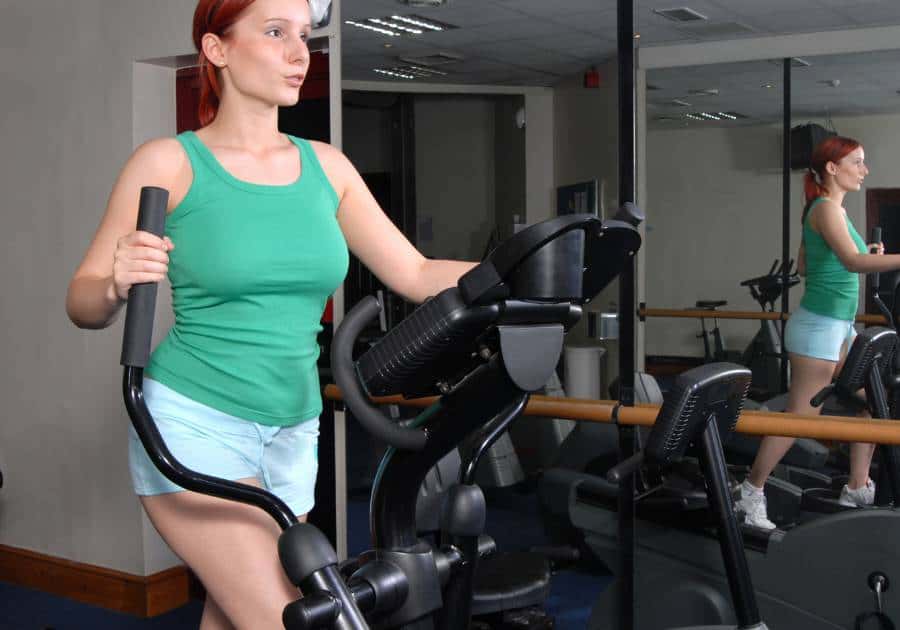Should I Get a Front-Drive Cross Trainer Or a Rear Drive Cross Trainer – Which Is Better?
When looking for the best cross trainer on the market, you will likely be faced with two popular choices, front-wheel-drive machines or rear-wheel drive ellipticals.

Both types of cross trainers can give you a challenging workout but do have some major differences to consider in terms of stride motion and adjustability. For example, front-drive elliptical machines are often more affordable and compact, while rear-drive models have a more natural feel and are great elliptical machines for runners.
So to find out which type of elliptical trainers is right for you, we have compared both models below and discussed their key differences to see which exercise machines are worth the investment for your home gym.
How Does a Front Drive Cross Trainer Work?
Front-drive cross trainers are very common on the market, this flywheel mechanism is located at the front of the machine and has a stair climber feel resistance to the machine.
They are often made with light flywheels which make them affordable, the elliptical motion is made by leaning forward.
How Does a Rear Drive Machine Work?
A rear-drive design on a cross-trainer works with the flywheel located at the back of the machine to give a more natural feel to the type of workout, its smoother motion is more like real-life running or walking and it often forces you to stand on the machine in a straighter position.
If your goal is to burn calories faster, this article on cross trainers and treadmills will surely give you peace of mind.
Front Drive Vs Rear Drive Models – Which Elliptical Is Better?
Now we know how each machine works and where the resistance happens, let’s compare the key features and differences between each model to see which cross-trainer is right for you.
Front Drive Cross Trainers
First up, let’s start with front-drive cross-trainers. These types of stair steppers like machines are great for people who are looking to work out with incline options, they are also more affordable than rear-drive ellipticals and more compact for storage too which makes them perfect for a home gym if you are looking to save on space.
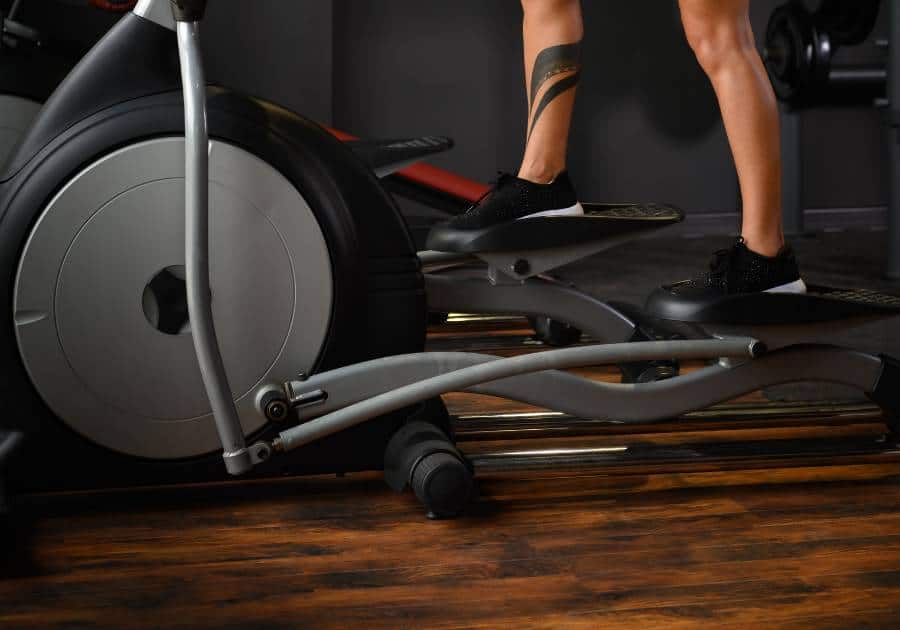
Disadvantages of front-drive cross-trainers have to be the fact that these types of cross trainers need more maintenance due to the location of the flywheel, meaning there might be more ongoing costs despite their cheap upfront costs.
These models are also noisier than rear-drive ellipticals so this is something to be considered if you are planning to have your front-drive model in the house!
Pros
- Affordable.
- Portable.
- Great for incline.
Cons
- Needs more repairs.
- Noisy.
- Less natural feel.
Rear Drive Cross Trainers
On the other hand, rear-drive ellipticals are also great thanks to the fact they give you a flatter workout experience due to the location of the flywheel. This offers a natural feeling like running and walking and sometimes can offer longer stride lengths for a more intense workout.
Rear-drive models are also excellent thanks to the fact they are quieter to function and have fewer moving parts which mean there is less of a chance for parts to break on the machine.
However, despite rear drive cross trainers having a lot of pros, there are some cons to be aware of. These models do not come cheap, meaning you will need a higher budget for your home gym, they also take up more storage space.
Rear-drive cross trainers have fewer incline options too.

Pros
- Natural feeling.
- Quiet.
- Less maintenance.
Cons
- Expensive.
- Take up more storage.
- Fewer incline options.
Conclusion – Which Cross Trainer Should I Choose?
Overall, there is not too much difference in performance between the two cross-trainers, each machine will give you a good workout. If you prefer incline options and are on a budget, go for a front-drive cross trainer, however, if you after a natural feeling and want a better stride length range, then a rear-drive model might be the better choice.
Are Center Driver Ellipticals Worth It?
Center drive ellipticals are newer on the market and have their flywheel located in the centre of the machine, this gives the model a natural feel and a more comfortable position for the user which isn’t as forward as a front-drive cross trainer but also not as upright as a rear-drive model.
These models are additionally very quiet, easy on the joints and great for beginners.
If you are interested in a centre drive cross trainer you will need to have a high budget as these machines do not come cheap due to their new technology.
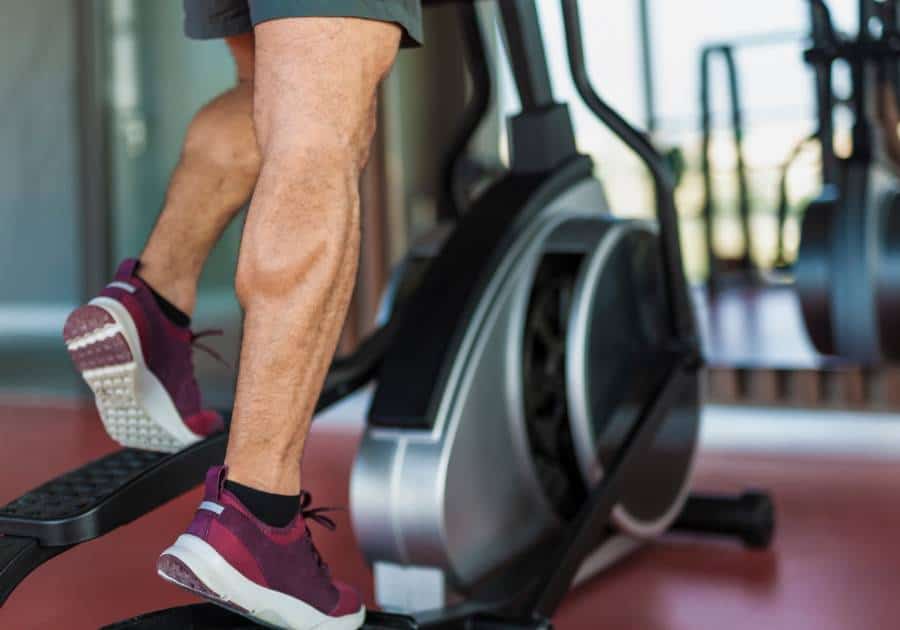
Frequently Asked Questions About Rear Drive VS Front Driver Cross Trainers
How much do front-drive trainers cost compared to rear driver trainers?
Front-drive cross-trainers typically cost between £100 and £500 while rear-drive cross trainers are between the £500-£1000 mark as they are often made with more expensive technology.
Which type of trainer mimics real-life running the most?
The type of cross trainer which has the most natural feel and stride is the rear-drive cross trainer thanks to the location of the flywheel.
How much does a centre driver trainer cost?
A centre drive trainer is made with newer technology and will typically cost between £400-£1000 depending on the functions and power it comes with.
How do I maintain my front-drive trainer?
To maintain your cross trainer well you will need to continue to perform basic maintenance regularly, this care includes; wiping the machine down, replacing any worn down parts, tightening fasteners and lubricating parts of the machine.
Final Words
Overall, front-drive and rear-drive cross trainers are both great options to invest in if you are looking for a machine to get your cardio in, we would always recommend going for a rear-drive trainer if you want a natural feel to working out which is similar to running, however, if you are on a budget then a front-drive cross trainer is also a great option which has a good range of incline options.
If you are wondering what’s the best to use at home for your workout sessions, this ultimate guide of home exercise bike and cross trainer will surely answer your questions.



